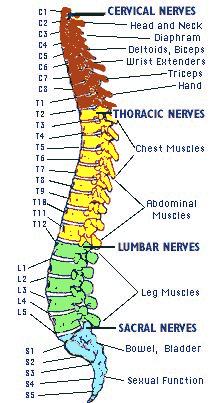The Rehabilitation of People with Spinal Cord Injury (2nd Ed.)
Shanker Nesathurai, MD, Editor Boston Medical Center Boston, MA 2000, 122 pages
This monograph is "intended to provide an overview of the clinical issues for resident physicians (p. 5). It provide an overview of the recovery process from initial evaluation to community re-entry along a continuum of treatment settings. The authors all acknowledge the critical importance of a team approach to spinal cord injury (SCI) treatment and rehabilitation. The book is remarkable for its concise yet thorough approach to a difficult subject. Although laden with medical terminology, it is not beyond understanding by trained rehabilitationists.
Subjects covered include: epidemiology, patholophysiology, and surgical management of SCI; clinical and functional evaluation; initial rehabilitation medicine consultation; bladder and bowel management; pressure ulcers; contracture management; autonomic dysfunction; upper motor neuron syndrome; heterotropic ossificans; psychological adaptation; sexuality; aging; wheelchair mobility; environmental modifications; and community reintegration.
The chapters are brief, but provide a tremendous amount of information, and the chapter structure is typically very direct. For example, the chapter on the initial rehabilitation medicine consultation includes a statement of the purpose of the chapter, elements of a consultation, bladder management, bowel management, pressure ulcers, contractures, autonomic dysfunction, upper motor neuron syndrome and spasticity, DVT prophylaxis, pulmonary issues, psychological adaptation, pain, comorbid conditions, disposition and discharge planning, long-term issues, and ends with a checklist of important report elements. Each of these subjects typically gets one or two paragraphs of coverage.
Special features of this monograph include a number of informative tables and figures, concise and consistent language style of each chapter, highly qualified writers on each subject (18 in all), and warnings about potentially adverse treatments. The targeted audience for this book is obviously residents and physiatrists, but allied medical and rehabilitation professionals will also find it of value when serving individuals with SCI.
The editor, Shanker Nesathurai, MD, is Chairman and Assistant Professor of Rehabilitation Medicine at Boston University School of Medicine, and Chief of Rehabilitation Services at Boston Medical Center. The Rehabilitation of People with Spinal Cord Injury is a concise reiteration of the medical aspects of SCI. This reviewer's only criticism is the lack of inclusion of the integral role of the rehabilitation counselor and the rehabilitation nurse in re-entry and adjustment to SCI issues, particularly vocational indications.
Joseph E. Havranek, Ed.D., CRC Associate Professor of Rehabilitation Counseling Bowling Green State University
COPYRIGHT 2001 National Rehabilitation Association
COPYRIGHT 2001 Gale Group



